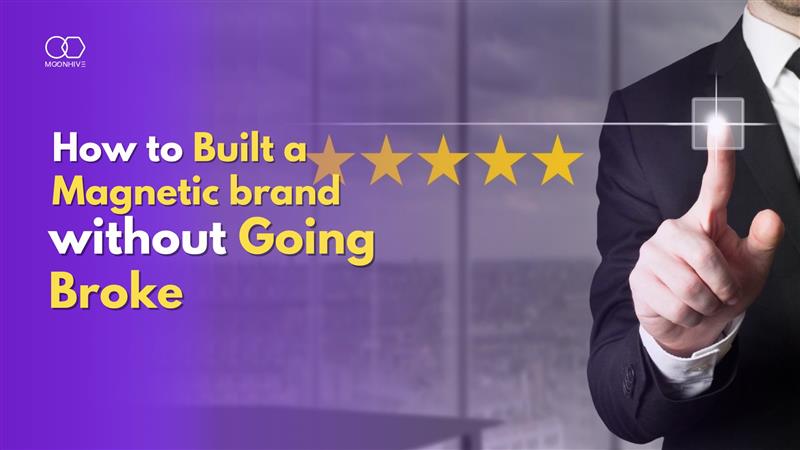How to stand out, earn trust, and build community without burning cash
1. Branding Is More Than Just a Logo
When most people hear “brand,” they think logos, colors, and typography. While those matter, your startup brand is much deeper. It’s the feeling people associate with your company the emotional impression you leave behind.
Branding is how your startup behaves in emails, how it responds on social media, how your product makes people feel during onboarding. Especially for early-stage founders, your actions shape your brand more than your visuals.
2. Why Early-Stage Is the Best Time to Build Your Brand
One of the biggest myths is that branding comes after product-market fit or funding. In reality, the earliest days are when your brand is most flexible and most powerful.
With fewer users, you’re closer to your audience. You can listen, respond, and shape perception without the weight of corporate polish. This is the perfect time to craft a founder-led brand authentic, transparent, and purpose-driven.
If you haven’t already, revisit our Startup Launch Roadmap to align your brand identity with the earliest steps of your business journey.
3. Lead with Your Founder Story
People connect with people. Not features. Not mockups. Not jargon.
A compelling founder story gives your brand a heartbeat. Why did you start this company? What pain point inspired it? Why does this problem matter to you?
When you share your personal journey through your website, pitch, or Medium users feel like they’re part of something meaningful. It’s one of the most authentic and zero-cost ways to build early brand loyalty.
4. Clarify Your Message, Don’t Overdesign It
A magnetic brand doesn’t need to be flashy it needs to be clear. At a glance, your landing page should answer:
▪️What do you do?
▪️Who is it for?
▪️Why does it matter?
If users can’t understand your offering within the first 5 seconds, it’s a messaging issue not a marketing one. Clarity builds trust. Confusion creates bounce.
To craft this clarity, review what you’ve learned from users. If you’ve already been tracking early adoption data using our Startup Metrics 101 guide, those insights will help you shape messaging that resonates.
5. Design Consistency Builds Recognition
Your branding doesn’t need a $20k designer but it does need consistency.
Choose a simple color palette. Pick two fonts. Use one tone of voice across all touchpoints: your website, pitch deck, social banners, and emails. Use free tools like Canva, Looka, or Coolors to stay visually aligned.
Design is less about beauty and more about coherence. The more consistent your visuals, the more professional (and trustworthy) you appear even on a lean budget.
6. Turn Every Touchpoint into a Brand Moment
From your onboarding emails to your error messages, every single touchpoint is part of your brand story.
Do you sound like a human or a bot?
Are your tooltips helpful or cold?
Do you respond to DMs like a founder or like a script?
These small interactions make users feel something. And feelings build memory.
A brand isn’t just built with campaigns it’s built in the day-to-day micro-moments your users have with you.
7. Let Your Content Do the Talkin
You might not have an ad budget, but you do have a voice. Use it.
Start a founder blog. Share product learnings. Break down the “why” behind your features. Post consistently on LinkedIn or Medium not to sell, but to show your thinking.
One founder we advised gained their first 50 beta users entirely from transparent blogs about the product-building process. That’s not marketing. That’s brand storytelling.
8. Build Trust Through Community, Not Campaigns
In the early days, community is your best brand asset.
Invite early users into your process. Ask for feedback. Shout them out in updates. Respond to comments. Let people shape the journey with you.
A magnetic startup brand is not just a message it’s a shared mission. The more people feel involved, the more they care. And caring is the most powerful brand outcome of all.
9. Data Can Sharpen Your Brand Voice
If you’re already measuring how users behave what they click, where they churn, what they comment you’re sitting on a goldmine of branding insights.
What language do they use in reviews or feedback?
Which content drives the most signups or shares?
Where do they feel lost or excited?
Use this feedback loop to shape future brand decisions from taglines to support tone to feature names.
To set this system up early, revisit the Startup Metrics 101 Guide and see which insights help refine how your brand sounds and feels.
Final Thoughts
You don’t need billboards or branding agencies to be memorable. The most magnetic startup brands are built by staying real, being clear, and showing up consistently. Start with your story. Sharpen your message. And use every interaction no matter how small to reinforce your mission.
Need help laying the foundation for your brand identity, roadmap, or user funnel? Start with our Startup Launch Toolkit practical templates and checklists designed for first-time founders like you.
